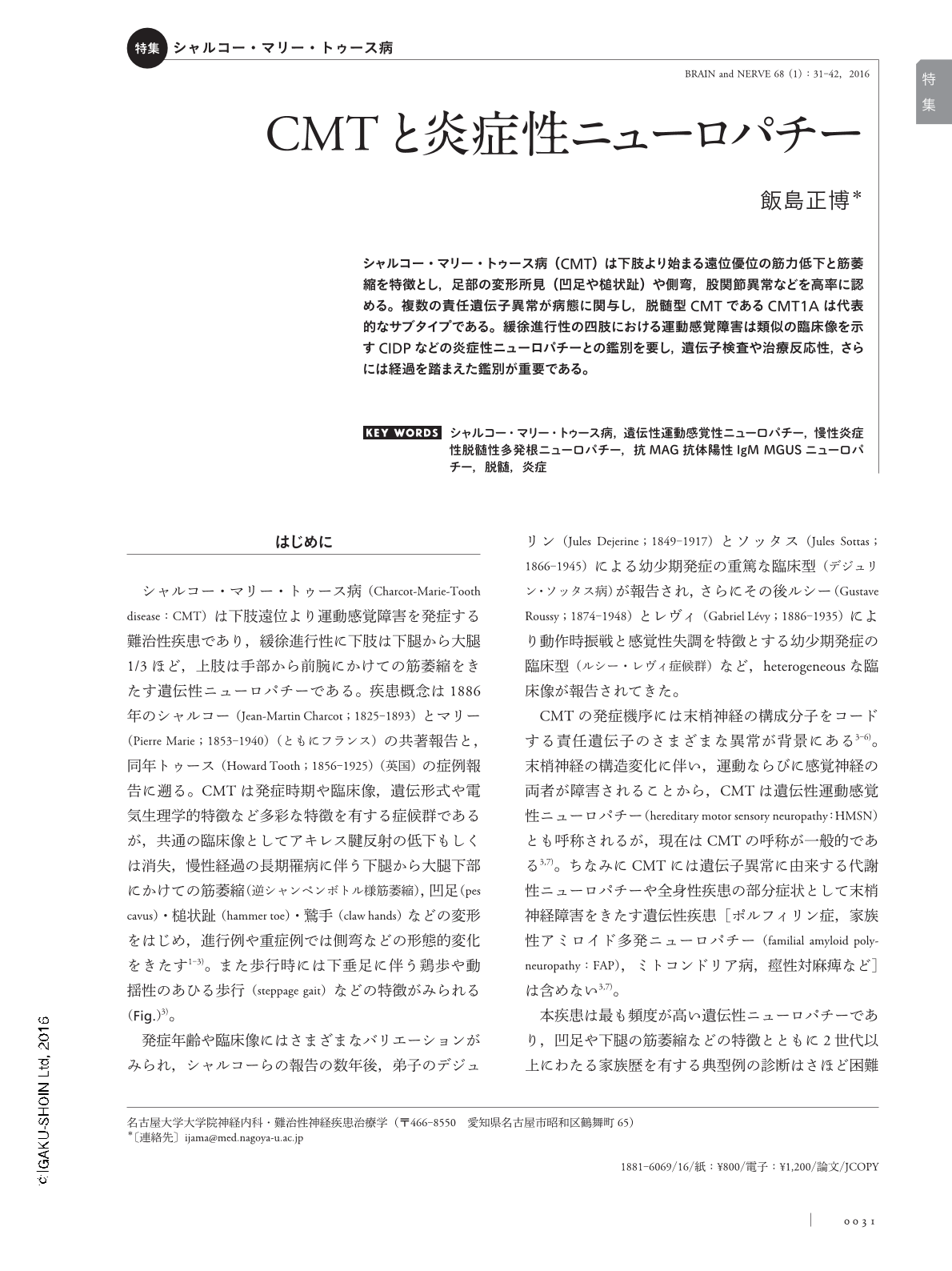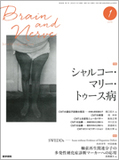Japanese
English
- 有料閲覧
- Abstract 文献概要
- 1ページ目 Look Inside
- 参考文献 Reference
シャルコー・マリー・トゥース病(CMT)は下肢より始まる遠位優位の筋力低下と筋萎縮を特徴とし,足部の変形所見(凹足や槌状趾)や側弯,股関節異常などを高率に認める。複数の責任遺伝子異常が病態に関与し,脱髄型CMTであるCMT1Aは代表的なサブタイプである。緩徐進行性の四肢における運動感覚障害は類似の臨床像を示すCIDPなどの炎症性ニューロパチーとの鑑別を要し,遺伝子検査や治療反応性,さらには経過を踏まえた鑑別が重要である。
Abstract
Charcot-Marie-Tooth disease (CMT), the most frequent form of inherited neuropathy, is a genetically heterogeneous syndrome of the peripheral nervous system with a rather homologous clinical phenotype (slowly progressive distal weakness and muscle atrophy, skeletal deformities, and areflexia in each limb). CMT1 is the autosomal-dominant demyelinating form, and CMT1A (mostly PMP22 duplication) is the most frequent subtype, followed by CMTX1, HNPP (hereditary neuropathy with liability to pressure palsies), CMT1B, or CMT2. As CMT is characterized by slowly progressive motor and sensory disturbances in each limb, it could be misdiagnosed as chronic inflammatory demyelinating polyneuropathy (CIDP) occasionally. Some points can distinguish demyelinating CMT from CIDP. CMT1 patients do not show the conduction block that is frequent in CIDP. In addition, ultrasonographic findings are useful because CMT1 suggests diffuse enlargement of peripheral nerves, whereas CIDP is characterized by asymmetrical or focal enlargement of peripheral nerves. Some CMT1 cases show favorable responses to immunomodulating therapeutics such as corticosteroids, IVIg, and plasma exchange. Such CIDP-like CMT1 (especially CMT1B or CMT2A) shows moderate to high levels of cerebrospinal fluid protein and infiltrated inflammatory macrophages.

Copyright © 2016, Igaku-Shoin Ltd. All rights reserved.


